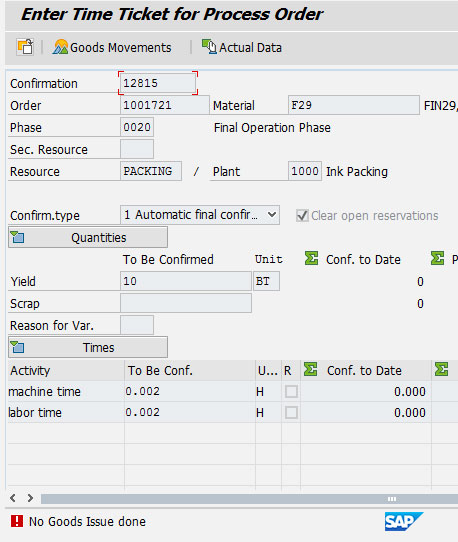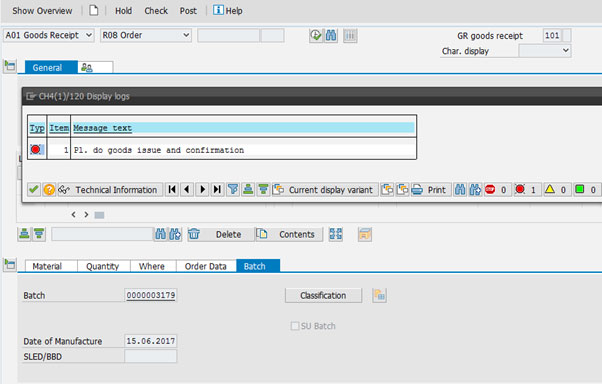Synchronization of Industry Business Processes with SAP
Publish Date: June 23, 2017In the manufacturing plant, a yearly plan is prepared, revised every month based on the current trends and prevailing situation in the market. Once the plan is freezed in the meeting, it is shared with the production manager and the purchasing department. In order to manufacture the finished goods as per the plan, a shop floor work order is generated, and its print is sent to the warehouse for the transfer of the materials. Once the material is received on the shop floor location, the order is released to the production team to start the process based on the work instructions.
The best practice related to production order process is to issue goods first, and then get confirmation of the order and finally the goods receipt. The same practice should also be followed while executing this process in SAP too. This blog tells us how we can restrict the order confirmation without an issue of goods or how we can restrict goods receipt without confirmation of the order.
Currently, in SAP, the system allows us to issue the goods only after confirmation of production order, or we can directly generate goods receipt after the release of the order.
Some of the customization settings still help us to restrict the approval without issuing the goods by activating all the materials with backflush or by checking the option “All components” in the Order confirmation parameters. This indicator in the system displays all the components regardless of whether the back-flushing indicator is set for the components in the order.
In the same configuration step, we can select the indicator for goods movement and termination for incorrect goods movement. This step will terminate the confirmation transaction if there are any issues in goods movement. Thus, there would be neither goods issue nor confirmation. Again, through scheduling profile configuration and using control key, we can automate the goods receipt process from confirmation. But still, we cannot restrict the goods receipt. Some of the other ways through which we can automate the process are by using the user exits.


Some of the support issues that are normally faced are:
- During the batch determination, old batches are picked up
- Physical stock is not in alignment with the SAP Stock
- Huge discrepancies in the manufacturing costs
- Differences in the production costs are to be settled manually, which is a cumbersome job
- Some of the batches are not issued due to some problems and are shown in COGI and are to be settled again, which results in lot of discrepancies.
By writing the restriction codes for the above two processes, we can align and control the discrepancies. Many of the companies like pharma, chemical, automobile or where expensive components are used in the process, these user exits can be of great help. To control the above issues, some of the other methods used are barcoding and handheld devices for material issues. This reduces the overall differences and would again help in keeping in alignment with the physical stock and system stock along the processes. This also helps in increasing the efficiency of the person working on the shop floor as all the activities have been updated/ completed online.
In the case of any complaints from different customers, we can trace back the material or components consumed/ issued from child order to the parent order without any missing data as we have all the information beforehand. This helps the manufacturing plant to improve customer service and helps them in resolving issues easily. Any defects identified during the process can be resolved and rectified.
For more information Download YASH SAP Overview Brochure
Vamsi krishna Solution Architect @ YASH Technologies
















